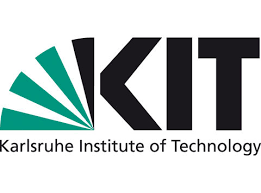Karlsruhe Institute of Technology: Synthetic Fuels: Container Facility at KIT Successful in Coupled Operation
The use of synthetic fuels could in future minimize greenhouse gas emissions from air travel and heavy haulage. With a power-to-liquid system from INERATEC, which the Karlsruhe Institute of Technology (KIT) operates together with the spin-off at Energy Lab 2.0, this is within reach. The modular system is housed in a container and is now to be mass-produced by the spin-off.
“This is the final step on the way to industrial use,” says Professor Roland Dittmeyer from the KIT Institute for Microprocess Engineering. “Systems of this type of construction will contribute to making the transport sector and the chemical industry more sustainable with e-fuels and e-chemicals.” The system is located on the Energy Lab 2.0 site on the north campus of KIT. It produces from carbon dioxide (CO 2 ) and renewable hydrogen (H 2) a synthetic fuel mixture, also called SynCrude, that can be processed into synthetic kerosene, diesel and gasoline. “This requires two reactor stages, which we are coupling for the first time, operating with an improved design and on a scale relevant for technology development,” says Dittmeyer. “We can produce up to 200 liters of fuel per day.”
Innovative technology from INERATEC
The long-chain hydrocarbons of the SynCrude are produced in one of the reactor stages by means of Fischer-Tropsch synthesis (FT synthesis) from synthesis gas, which is mainly composed of carbon monoxide (CO) and H 2consists. It is generated in the other reactor upstream of the FT synthesis by the reverse water gas shift reaction (RWGS). The RWGS reactor is made up of microstructured plates, which enable flexible operation of the plant and ensure greater efficiency. The new design of these plates has now been successfully demonstrated in coupled operation. “With the optimized RWGS reactor, the reactions can now be controlled even more precisely, and we were able to significantly improve the process,” says Dr. Tim Böltken, one of the managing directors of INERATEC. Up to three kilograms of hydrogen can be processed from electrolysers every hour. “That corresponds to a connected load of 125 kilowatts, and that sets standards worldwide,” says Böltken.
The next step is series production
The demonstration of the RWGS reactor technology from INERATEC at this scaling level represents the last important step in a university research environment. The company then wants to be able to provide the Power-to-X technology quickly and inexpensively with series production through further scaling, standardization and duplication . The KIT spin-off is funded by the European Union with 2.5 million euros through the IMPOWER2X project.
As early as 2019, in the first funding phase of the Kopernikus project P2X, the world’s first fully integrated system for the production of “fuel from air and green electricity” was put into operation at KIT. The plant produced around ten liters of synthetic fuels per day and combined CO 2 separation from the air, high-temperature electrolysis for the generation of synthesis gas, FT synthesis and product processing into the finished fuel. Currently, in the second funding phase of P2X, this process chain is being set up on a scale of 250 kilowatts in Energy Lab 2.0 and should then generate around 200 to 300 liters of fuel per day directly from the CO 2 in the air from 2022 .

